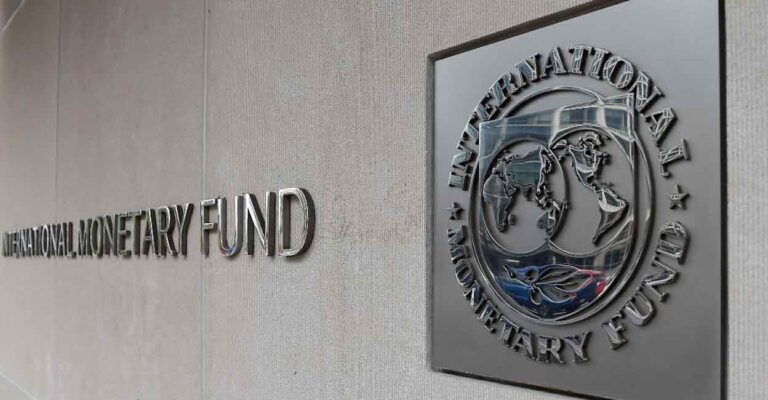• The International Monetary Fund and Pakistan have agreed to a $7 billion aid package over three years to help the cash-strapped country address its chronic economic problems.
• Building on the economic stabilization achieved under the 2023 Stand-By Arrangement (SBA), IMF staff and Pakistani authorities have reached a staff-level agreement on a 37-month Extended Fund Facility (EFF) arrangement for approximately $7 billion.
• The Extended Fund Facility provides financial assistance to countries that face serious medium-term balance of payments problems due to structural weaknesses that will take time to resolve. The Extended Fund Facility provides longer program agreements and longer repayment terms to enable countries to implement medium-term structural reforms.
• The new program aims to support authorities’ efforts to consolidate macroeconomic stability and create conditions for stronger, more inclusive and resilient growth in cash-strapped countries.
• This includes reform measures to strengthen fiscal and monetary policies, broaden the tax base, improve management of state-owned enterprises (SOEs), increase competition and ensure a level playing field for investment, strengthen human capital, and expand social protection by increasing the generosity and coverage of the Benazir Income Support Programme (BISP).
• The new agreement is the country’s latest move to turn to international financial institutions for help in propping up its economy and addressing its debt through a massive bailout package.
• Earlier this year, the IMF approved the immediate disbursement of the final $1.1 billion of Pakistan’s $3 billion bailout package.
International Monetary Fund (IMF)
• The IMF was conceived at the United Nations Bretton Woods Conference held in July 1944 in New Hampshire, USA.
• The 44 countries that attended aimed to create a framework for international economic cooperation and avoid a repeat of the competitive currency devaluations that contributed to the Great Depression of the 1930s.
• The IMF’s primary mission is to ensure the stability of the international monetary system — the system of exchange rates and international payments that allows countries and their citizens to trade with each other.
• It currently has 190 member countries and staff from 150 countries.
• India is a founding member of the IMF.
• Headquartered in Washington, DC
• The IMF is accountable to its member governments.
• The IMF’s highest decision-making body, the Board of Governors, consists of one Governor and one Alternate Governor for each member country. Governors are appointed by member countries and are usually their finance ministers or central bank governors.
What financial assistance does the IMF provide?
Unlike development banks, the IMF does not lend to specific projects. Instead, it provides financial assistance to countries hit by crises, giving them the space to implement policies that restore economic stability and growth. It also provides preventive lending to help prevent crises. IMF lending is continually improved to meet countries’ changing needs.
The IMF’s lending process is flexible: countries that maintain sound policy commitments may be able to access funds on unconditional or limited terms.
IMF Lending Instruments
The IMF has several lending instruments to meet the different needs and specific circumstances of its member countries:
i) Stand-By Arrangements (SBAs) provide short-term financial assistance to countries facing balance of payments problems. Historically, this has been the IMF lending instrument most frequently used by advanced and emerging market countries. Over the years, SBAs have been upgraded to make them more flexible and responsive to country needs.
ii) The Standby Credit Facility (SCF) provides financial assistance to low-income countries with short-term balance of payments needs. The SCF is a component of the Poverty Reduction and Growth Trust (PRGT).
iii) The Extended Fund Facility (EFF) provides financial assistance to countries facing severe medium-term balance of payments problems due to structural weaknesses that require time to resolve. The EFF provides longer program agreements and longer repayment periods to enable countries to implement medium-term structural reforms.
iv) The Extended Credit Facility (ECF) provides medium-term financial assistance to low-income countries with persistent balance of payments problems. The ECF is one of the facilities under the umbrella of the Poverty Reduction and Growth Trust (PRGT).
v) The Rapid Financing Facility (RFI) provides rapid financial assistance to IMF member countries facing urgent balance of payments needs. The RFI is one of the General Resources Account (GRA) facilities that provides financial assistance to countries, including in times of crisis.
vi) The Rapid Credit Facility (RCF) provides fast, concessional financial assistance to low-income countries facing urgent balance of payments needs. The RCF is a facility within the Poverty Reduction and Growth Trust (PRGT) framework that provides flexible, tailored financial assistance to low-income countries, including during crises.
vii) The Flexible Credit Line (FCL) is designed to meet the crisis prevention and crisis mitigation lending needs of countries with very strong policy frameworks and proven economies.
viii) The Short-Term Liquidity Line (SLL) is a liquidity backstop for members with very strong policy frameworks and fundamentals that face potential moderate short-term liquidity needs due to an external shock causing balance of payments difficulties. It is intended to minimize the risk that the shock will escalate into a severe crisis and spread to other countries.
ix) The Precautionary and Liquidity Line (PLL) is designed to meet the liquidity needs of members with sound economic fundamentals but who still have vulnerabilities that prevent them from accessing the Flexible Credit Line (FCL).
x) The Resilience and Sustainability Facility (RSF) provides affordable long-term financing to countries implementing reforms to reduce risks to future balance of payments stability, including those related to climate change and pandemic preparedness.



